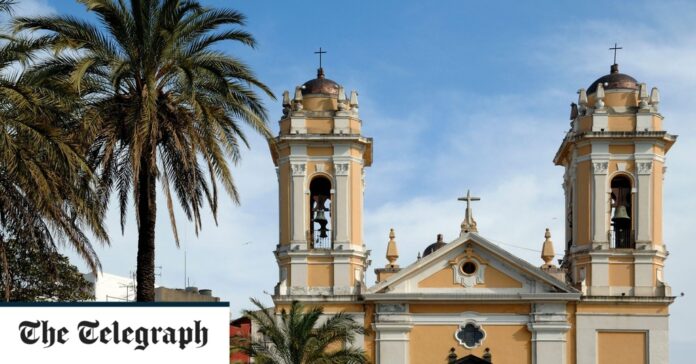The city of Ceuta in Morocco offers the chance to feast on tapas against a soundtrack of Muslim calls to prayer
Ceuta is a slender finger of land that juts out into the Mediterranean, 11 miles south of Gibraltar. While Gibraltar is a slice of England in Spain, Ceuta is a nugget of Spain in Morocco – a geopolitical controversy with deep historic roots. Situated on the north coast of Africa, it has been a strategic outpost since antiquity when Hercules, according to legend, parted the Atlas Mountains to create the straits that separate Europe and Africa.
This feat is commemorated in Ceuta by two seven metre bronze statues cast by local sculptor, Gines Serrán Pagán. One stands in the Plaza de la Constitution and depicts the muscle-bound Greek hero sundering two pillars, symbolising the promontories of Monte Hacho in Ceuta and the Rock of Gibraltar. The second, entitled ‘The Union of World’, stands on the La Puntilla breakwater and shows him strenuously pulling the pillars back together again. Look to the starboard side as you glide into port – Ceuta is an offbeat stop on some Med cruises – and you’ll spot it.
The statues are a great metaphor of the historic tussle for this seven-square-mile peninsula. Beyond the Greek legends, Ceuta was an important Roman military garrison (its Arabic name, Sebta, stems from the Latin Septem); Christianity arrived from the east in the 3rd century – the 4th-century Tardorromana basilica was recently discovered – along with Byzantine control; Imazighen (Berber) tribes took over in the 8th century; after the fall of the Caliphate of Cordoba in 1031, Ceuta was ruled by successive North African dynasties; it was captured by the Portuguese in 1415; and then became a Spanish territory after the Treaty of Lisbon in 1668.
The result is a city with a unique Iberian-Moroccan personality. Step into the European-style city centre, with its cafes and tapas bars, and Ceuta’s Spanish character is undeniable. In the charming Plaza de África is the city’s main neoclassical cathedral, modelled on the one in Cadiz. It was raised atop the Grand Mosque when John I of Portugal consecrated the diocese of Ceuta in 1417.


